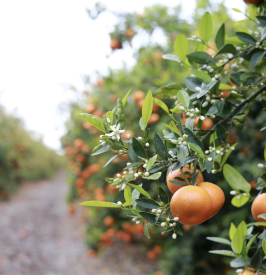It should come as no surprise that agriculture emerged from one of the worst recessions since the Great Depression even stronger. After all, people must eat whether times are plentiful or scarce.
In fact, worldwide food demand continues to rise alongside population growth, even as the supply of farmable acres per capita shrinks.
Consider this: the United States had 2.43 arable acres for every person in the country in 1961, according to data from the World Bank. By 2018, that number had plummeted to 1.19 acres.
Globally, farmable acres have fallen from 0.89 to 0.45 acres per person over the same period. And supply may be further constrained in the years to come due to water and weather challenges.
Meanwhile, the United Nations predicts that the number of mouths to feed will grow from 7.7 billion in 2019 to 8.5 billion in 2030 and 9.7 billion by 2050.
That’s why our company invests in farmland, which represents a rare sector that combines rising demand with shrinking supply. We mostly buy farms from other landlords, not direct operators, then lease the land back to local farmers to do what they do best.
Such investments have historically performed well during times of distress. I often refer to farmland as gold with a coupon – an asset whose appreciation acts an inflation hedge while still providing rental income. …
Read the full article on AgDaily.com



